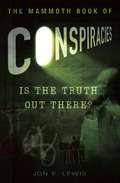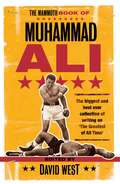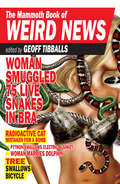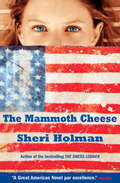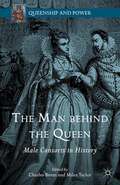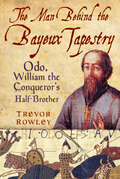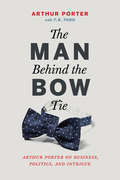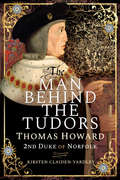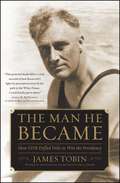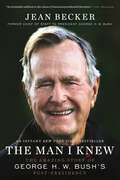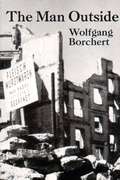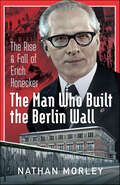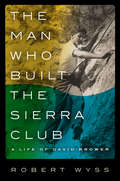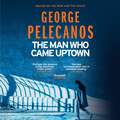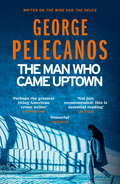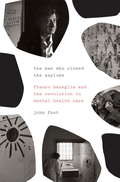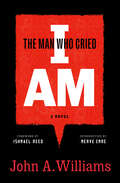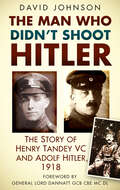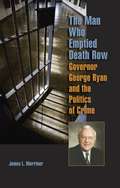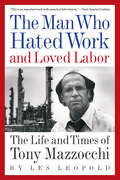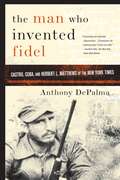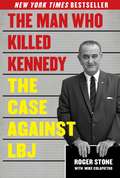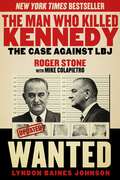- Table View
- List View
The Mammoth Book of Conspiracies (Mammoth Books #369)
by Jon E. LewisBang up to date with fresh cover-ups relating to Barack Obama, Michael Jackson and AfghanistanThe 100 military, medical, religious, alien, intelligence, banking and historical cover-ups 'they' really don't want you to know about: The Military-Industrial Complex's fomentation of war with Iraq; the construction of concentration camps in the United States by FEMA (the Federal Emergency Management Agency); the use of alien 'Foo Fighters' by the Nazis and the Japanese during the Second World War; the miracle natural drug suppressed by Big Pharma; the Israelis' responsibility for the bombing of USS Cole; the real reason why CERN broke down; the murder of Paul McCartney - and you didn't even know he was dead. Entertainingly written and closely documented, The Mammoth Book of Conspiracies uncovers the 100 most secret cover-ups in an accessible A-Z format. It covers 95 new conspiracies even more fiendish than those detailed in The Mammoth Book of Cover-Ups by the same author, and provides fresh revelations regarding the five furthest-reaching conspiracies in that book, including the assassination of JFK and 9/11. The book includes a full bibliography and introduction.
The Mammoth Book of Muhammad Ali (Mammoth Books #472)
by David WestFrom his gold medal at the 1960 Olympic Games to his defeat of Sonny Liston to claim the world heavyweight championship in 1964, the unforgettable 'Thrilla in Manila' against Joe Frazier and the 'Rumble in the Jungle' against George Foreman, 'The Greatest of All Time', Muhammad Ali, has captured the attention of the world. His conversion to Islam, his refusal to serve in the in the Vietnam War ('I ain't got no quarrel with them Vietcong') and his speaking tours in the 1960s have all contributed to his status as one of the most revered sporting figures ever. Here, drawn from books, specialist periodicals, newspapers, college magazines (covering his speaking tours) and the work of major literary figures such as Thomas Hauser is the biggest and best collection ever of writing on 'The Greatest'.
The Mammoth Book of Weird News (Mammoth Books #461)
by Geoff TibballsA humorous collection of hundreds of funny news stories, whacky phenomena, and hilarious blunders and gaffes from around the world, such as: the woman who smuggled 75 live snakes in her bra; the man who held a funeral for his amputated foot; the radioactive cat which got mistaken for a bomb; the human tongue that got served up in a hospital; the X-ray that revealed E.T.'s face in a duck; the youth who woke to find a bullet in his tongue; the tortoise that set a house on fire; and many more.
The Mammoth Book of Weird News (The Mammoth Bks.)
by Geoff TibballsA humorous collection of hundreds of funny news stories, whacky phenomena, and hilarious blunders and gaffes from around the world, such as: the woman who smuggled 75 live snakes in her bra; the man who held a funeral for his amputated foot; the radioactive cat which got mistaken for a bomb; the human tongue that got served up in a hospital; the X-ray that revealed E.T.'s face in a duck; the youth who woke to find a bullet in his tongue; the tortoise that set a house on fire; and many more.
The Mammoth Cheese (Books That Changed the World)
by Sheri HolmanShortlisted for the Orange Prize for Fiction. “A panoramic social novel with a needle-sharp point of view sends up both small-town America and politics” (People).Acclaimed bestselling author Sheri Holman’s third novel, The Mammoth Cheese, has been hailed as “stunning . . . a Great American Novel par excellence” by Newsday and by The New York Times Book Review as “lovely, disarming . . . tough, sad and surprisingly sweet.”Three Chimneys, Virginia resident Margaret Pricket, a single mother and specialty cheese maker, is in danger of losing all she holds dear. Her century-old family dairy farm is falling deeper into debt. Her thirteen-year-old daughter Polly, whom Margaret has tried to shelter from the modern world, is becoming perilously drawn towards her charismatic, subversive history teacher. Her loyal farmhand August, a Thomas Jefferson impersonator by night, is secretly in love with her. And she’s been convinced by the town’s pastor to recreate the original Thomas Jefferson-era, 1,235-pound “Mammoth Cheese,” as a gift for the President elect. Soon the entire town is wrapped up in the endeavor, and Margaret finds herself torn between her principles and her passions.An American pastoral like no other, The Mammoth Cheese is a delicious and satisfying tour de force.A San Francisco Chronicle Best BookA Publishers Weekly Book of the YearA Book Sense 76 Selection“Holman has fashioned a tale that is poignant and powerful and, like an award-winning cheese, surprisingly complex.”—The Washington Post Book World“A capacious book. Huge and amazing things happen within it.”—The Minneapolis Star-Tribune
The Man Behind The Queen
by Charles Beem Miles TaylorFrom the 14th-century king consorts of Navarre to the modern European prince consorts of the 20th century, the male consort has been a peculiar yet recurrent historical figure. In this impressively broad collection, leading historians of monarchy analyze how male partners of female rulers have negotiated their unique roles throughout history.
The Man Behind the Bayeux Tapestry: Odo, William the Conqueror's Half-Brother
by Trevor RowleyOdo of Conteville, the younger half-brother of William the Conqueror, was ordained Bishop of Bayeux while still in his teens. A larger than life character, he is best known for commissioning the Bayeaux Tapestry, in which he makes a dashing appearance at the height of the Battle of Hastings. He also played a pivotal role in the planning and implementation of the Conquest of England, after which, as Earl of Kent, he was second only to William in wealth and power. The popular impression of Odo is of a not so loveable rogue, who typified the worst excesses of the Norman conquerors. He was the first Chief Justice of England and on occasion also acted as regent when the king was in Normandy. After allegedly defrauding both Crown and Church, however, Odo was disgraced and his plans to raise an unauthorised army for a campaign in Italy, possibly in order to gain the papacy, saw him imprisoned for five years. He was released by the dying William in 1087, but soon rebelled against the new king, his nephew William Rufus. Yet Odo was far from being a loutish philistine. The bishop recognised the value of education and the arts and amongst his less well-known activities was his generous patronage of both. Trevor Rowley’s book is the first full-length biography of Odo, which also seeks to redress this balance and to make Bishop Odo’s extraordinary life story known.
The Man Behind the Bow Tie
by Arthur Porter T. R. ToddHow does it feel to be deemed guilty before trial? To be held in a cutthroat Panamanian prison while suffering from terminal lung cancer? How does it feel to rise to the top of the medical and public arenas in your adopted country, only to crash miserably to earth under allegations of fraud and money laundering? In short: What is it like to be Dr. Arthur Porter? There are few contemporary figures in Canada more intriguing and controversial than the former spy watchdog of the Canadian Security Intelligence Service. A physician by trade, Porter, always in his iconic bow tie, has been described as intelligent, charismatic, and relentless in his ambitions. Others have called him deceitful, manipulative, and unscrupulous.
The Man Behind the Tudors: Thomas Howard, 2nd Duke of Norfolk
by Kirsten Claiden-Yardley“Shed[s] some light on a rather remarkable man who was really behind the curtain during the reigns of quite a few English kings.” —Adventures of a Tudor NerdThomas Howard, 2nd duke of Norfolk, lived a remarkable life spanning eighty years and the reigns of six kings. Amongst his descendants are his granddaughters, Anne Boleyn and Catherine Howard, and his great-granddaughter, Elizabeth I. The foundations of this dramatic and influential dynasty rest on Thomas’ shoulders, and it was his career that placed the Howard family in a prominent position in English society and at the Tudor royal court.Thomas was born into a fairly ordinary gentry family, albeit distantly related to the Mowbray dukes of Norfolk. During the course of the fifteenth century, he and his father would rise through the political and social ranks as a result of their loyal service to Edward IV and Richard III. In a tragic turn of events, all their hard work was undone at the Battle of Bosworth and his father was killed fighting for King Richard. Imprisoned for treason and stripped of his lands and titles, Thomas had to start from the beginning to gain the trust of a new king. He spent the next thirty-five years devoting his administrative, military and diplomatic skills to the Tudors whilst rebuilding his family fortunes and ensuring that his numerous children were well-placed to prosper.“The Howards are one of the most intriguing families of the 16th century and this book opens up a chapter that hasn’t been much written about.” —The Tudor Blogger
The Man He Became
by James TobinWith a searching new analysis of primary sources, NBCC award winner James Tobin reveals how FDR's fight against polio transformed him from a callow aristocrat into the energetic, determined statesman who would rally the nation in the Great Depression and lead it through World War II.When polio paralyzed Franklin Roosevelt at thirty-nine, people wept to think that the young man of golden promise must live out his days as a helpless invalid. He never again walked on his own. But in just over a decade, he had regained his strength and seized the presidency. This was the most remarkable comeback in the history of American politics. And, as author James Tobin shows, it was the pivot of Roosevelt's life--the triumphant struggle that tempered and revealed his true character. With enormous ambition, canny resourcefulness, and sheer grit, FDR willed himself back into contention and turned personal disaster to his political advantage. Tobin's dramatic account of Roosevelt's ordeal and victory offers central insights into the forging of one of our greatest presidents.
The Man I Knew: The Amazing Story of George H. W. Bush's Post-Presidency
by Jean BeckerA heartfelt portrait of President George H.W. Bush—and his post-presidential life—by the confidante who knew him best. <P><P><b>A New York Times Best Seller</b>
The Man Outside
by Wolfgang Borchert David PorterBochert speaks about WWII, its victims and repercussions.
The Man Who Built the Berlin Wall: The Rise & Fall of Erich Honecker
by Nathan MorleyThe first ever English language biography of Erich Honecker, covering his entire life and career. In The Man Who Built the Berlin Wall, Nathan Morley brings to life the story of the longtime leader of the German Democratic Republic. Drawing from a wealth of untapped archival sources – and firsthand interviews with Honecker’s lawyers, journalists, and contemporary witnesses – Morley paints a vivid portrait of how an uneducated miner’s son from the Saarland rose to the highest ranks of the German Communist Party. Having survived a decade of brutality in Nazi prisons, Honecker emerged as an ambitious political player and became the shadowy mastermind behind the construction of the Berlin Wall in 1961, a crucial moment in twentieth-century history. Although frequently on the verge of being relegated to obscurity, he managed to overthrow strongman Walter Ulbricht at the height of the Cold War and reigned supreme over the GDR between 1971-1989. However, by 1980, the Honecker honeymoon was on the wane as a decade of economic and social difficulties blighted the GDR. Then, as tumultuous changes swept through the Soviet bloc, everything in and around him collapsed in 1989. His health, his certainties, his ideology, his apparatus of power, and his beloved SED party. Terminally ill, he was literally kidnapped from Russia to answer for his crimes in a Berlin court. A controversial figure, Honecker’s notorious philandering, his difficult relationship with his wife Margot, penchant for porn, addiction to hunting, and gilded lifestyle at a forest settlement north of Berlin are all brought into sharp focus. Although haunted by the fall of the Berlin Wall, Erich Honecker died in 1994, still believing the GDR was the envy of the world.
The Man Who Built the Sierra Club: A Life of David Brower
by Robert WyssDavid Brower (1912–2000) was a central figure in the modern environmental movement. His leadership, vision, and elegant conception of the wilderness forever changed how we approach nature. In many ways, he was a twentieth-century Thoreau. Brower transformed the Sierra Club into a national force that challenged and stopped federally sponsored projects that would have dammed the Grand Canyon and destroyed hundreds of millions of acres of our nation's wilderness. To admirers, he was tireless, passionate, visionary, and unyielding. To opponents and even some supporters, he was contentious and polarizing.As a young man growing up in Berkeley, California, Brower proved himself a fearless climber of the Sierra Nevada's dangerous peaks. After serving in the Tenth Mountain Division during World War II, he became executive director of the Sierra Club. This uncompromising biography explores Brower's role as steward of the modern environmental movement. His passionate advocacy destroyed lifelong friendships and, at times, threatened his goals. Yet his achievements remain some of the most important triumphs of the conservation movement. What emerges from this unique portrait is a rich and robust profile of a leader who took up the work of John Muir and, along with Rachel Carson, made environmentalism the cause of our time.
The Man Who Came Uptown: One of The Times ‘Best Crime Novels of the Decade'
by George PelecanosAnna Byrne is a jailhouse librarian. Most days, she loves her job and shares the life-affirming power of books to people who would have no hope without them. Often, she can get too close and forget some of these men are dangerous criminals.But some of them never had a chance. Like Michael Hudson, who's been locked up awaiting trial before his sudden release. He's happy and relieved but can't shake the question preying on his mind: how comes the witness who put him behind bars is suddenly refusing to testify?There's a man who might have the answer, but he wants something first. Phil Ornazian is a private investigator who moonlights as a petty criminal. He's not exactly proud of it, but times are hard in Washington D.C. People have to change to survive, or die trying.But everything comes at a price and, at some point, everyone has to pay...
The Man Who Came Uptown: One of The Times ‘Best Crime Novels of the Decade’
by George PelecanosFrom writer and producer on HBO's THE WIRE and THE DEUCE comes one of the most critically-acclaimed crime novels of the year:'He is, quite simply, among America's finest crime writers. This latest story does not disappoint ... lyrical, beautifully observed and constantly surprising, it is a delight' Daily Mail'In his first novel for five years, Pelecanos demonstrates why he deserves to be regarded as one of the best American crime novelists ... It's a moving tale, beautifully told' The Times* * * * *Anna Byrne is a jailhouse librarian. In a place where hope is hard to find, the power of books can be a light in the dark. For some of the prisoners, her work is life-changing.Like Michael Hudson, her best student, who's been locked up awaiting trial before his sudden release. He's relieved to be free - to 'come uptown', as they say - but can't shake the question: why is the witness who put him behind bars is suddenly refusing to testify? There's a man who might have the answer, but he wants something first. Phil Ornazian is a private investigator who moonlights as a petty criminal. He's not exactly proud of it, but times are hard in Washington, D.C. People have to change to survive, or die trying.But everything comes at a price and, at some point, everyone has to pay...* * * * *Praise for George Pelecanos: 'Perhaps the greatest living American crime writer' Stephen King 'Outstanding' Sunday Telegraph 'Powerful' Observer'American crime writing at its finest' Independent on Sunday'Terrific' Elmore Leonard 'Powerful' Michael Connelly 'I love the way he writes: economical, rhythmic, elliptical and angrily political' Val McDermid'Hard-boiled fiction with heart' Sunday Telegraph'Pelecanos has joined James Lee Burke and Lawrence Block at the high table of contemporary crime greats' The Times'The coolest writer in America' GQ 'Gold-standard character-driven crime writing that few will ever match' Financial Times
The Man Who Closed the Asylums: Franco Basaglia and the Revolution in Mental Health Care
by John FootWhen the wind of the 1960s blew through the world of psychiatry In 1961, when Franco Basaglia arrived outside the grim walls of the Gorizia asylum, on the Italian border with Yugoslavia, it was a place of horror, a Bedlam for the mentally sick and excluded, redolent of Basaglia's own wartime experience inside a fascist gaol. Patients were frequently restrained for long periods, and therapy was largely a matter of electric and insulin shocks. The corridors stank, and for many of the interned the doors were locked for life. This was a concentration camp, not a hospital.Basaglia, the new Director, was expected to practise all the skills of oppression in which he had been schooled, but he would have none of this. The place had to be closed down by opening it up from the inside, bringing freedom and democracy to the patients, the nurses and the psychiatrists working in that "total institution."Inspired by the writings of authors such as Primo Levi, R.D. Laing, Erving Goffman, Michel Foucault and Frantz Fanon, and the practices of experimental therapeutic communities in the UK, Basaglia's seminal work as a psychiatrist and campaigner in Gorizia, Parma and Trieste fed into and substantially contributed to the national and international movement of 1968. In 1978 a law was passed (the "Basaglia law") which sanctioned the closure of the entire Italian asylum system.The first comprehensive study of this revolutionary approach to mental health care, The Man Who Closed the Asylums is a gripping account of one of the most influential movements in twentieth-century psychiatry, which helped to transform the way we see mental illness. Basaglia's work saved countless people from a miserable existence, and his legacy persists, as an object lesson in the struggle against the brutality and ignorance that the establishment peddles to the public as common sense.From the Hardcover edition.
The Man Who Cried I Am: A Novel
by John A. WilliamsRediscover the sensational 1967 literary thriller that captures the bitter struggles of postwar Black intellectuals and artistsWith a foreword by Ishmael Reed and a new introduction by Merve Emre about how this explosive novel laid bare America's racial fault linesMax Reddick, a novelist, journalist, and presidential speechwriter, has spent his career struggling against the riptide of race in America. Now terminally ill, he has nothing left to lose. An expat for many years, Max returns to Europe one last time to settle an old debt with his estranged Dutch wife, Margrit, and to attend the Paris funeral of his friend, rival, and mentor Harry Ames, a character loosely modelled on Richard Wright.In Amsterdam, among Harry&’s papers, Max uncovers explosive secret government documents outlining &“King Alfred,&” a plan to be implemented in the event of widespread racial unrest and aiming &“to terminate, once and for all, the Minority threat to the whole of the American society.&” Realizing that Harry has been assassinated, Max must risk everything to get the documents to the one man who can help.Greeted as a masterpiece when it was published in 1967, The Man Who Cried I Am stakes out a range of experience rarely seen in American fiction: from the life of a Black GI to the ferment of postcolonial Africa to an insider&’s view of Washington politics in the era of segregation and the Civil Rights Movement, including fictionalized portraits of Martin Luther King, Jr., and Malcolm X. John A. Williams and his lost classic are overdue for rediscovery.Few novels have so deliberately blurred the boundaries between fiction and reality as The Man Who Cried I Am (1967), and many of its early readers assumed the King Alfred plan was real. In her introduction, Merve Emre examines the gonzo marketing plan behind the novel that fueled this confusion and prompted an FBI investigation. This deluxe paperback also includes a new foreword by novelist Ishmael Reed.&“It is a blockbuster, a hydrogen bomb . . . . This is a book white people are not ready to read yet, neither are most black people who read. But [it] is the milestone produced since Native Son. Besides which, and where I should begin, it is a damn beautifully written book.&” —Chester Himes&“Magnificent . . . obviously in the Baldwin and Ellison class.&” —John Fowles&“If The Man Who Cried I Am were a painting it would be done by Brueghel or Bosch. The madness and the dance is never-ending display of humanity trying to creep past inevitable Fate.&” —Walter Mosely
The Man Who Didn't Shoot Hitler: The Story of Henry Tandey VC and Adolf Hitler, 1918
by David JohnsonThis is the tale of two men.The first is Henry Tandey, an ordinary man later deemed to be ‘a hero of the old berserk type’, born and brought up in Leamington Spa, Warwickshire, who displayed extraordinary courage to emerge from the First World War as the most decorated British private to survive. The second is Adolf Hitler, who was highly decorated in his service to Germany in the First World War and went on to become one of the most infamous dictators in history, later bringing the world to the brink of destruction during the Second World War. It seems unlikely that their fates should collide. Yet in 1938 Hitler named Tandey as the soldier who spared his life on 28 September 1918 in the aftermath of the Battle of Marcoing – an assertion that came as a surprise to Tandey himself. The Man Who Didn’t Shoot Hitler tells the story of Tandey’s and Hitler’s Great War, the moment when their lives became intertwined – if in fact they did – and how Tandey lived with the stigma of being known not for his chestful of medals for gallantry in service of King and Country, but as the man who let Hitler live.
The Man Who Emptied Death Row: Governor George Ryan and the Politics of Crime
by James L. MerrinerGeorge H. Ryan, Illinois governor from 1999 to 2003, became nationally known for two significant and very different reasons. The first governor in the United States to clear out his state's death row and put a moratorium on the death penalty, he was also convicted and sent to prison on corruption charges. The Man Who Emptied Death Row: Governor George Ryan and the Politics of Crime details the career of a man who both enhanced and tarnished the image of the highest office in Illinois and examines the political history and culture that shaped him. Author James L. Merriner explores the two very different stories of George Ryan: the brave crusader against the death penalty and the petty crook. An extensive analysis of the official record, exclusive interviews, and previously undisclosed incidents in Ryan's career expose why the governor pardoned or commuted the sentences of all 171 prisoners on Illinois's death row before leaving office and how he later was convicted of eighteen counts of official corruption. This biography traces Ryan's family history and the Illinois political climate that influenced his development as a politician. Although Ryan championed "good-government" initiatives--organ donations, tougher drunken-driving and lobbyist disclosure laws--he never overcame a reputation as a wheeler-dealer, notes Merriner. Merriner goes beyond Ryan's life and career to explore the politics of crime, highlighting the successes and failures of the criminal justice system and suggesting how both white-collar fraud and violent crime shape politics. A fascinating story that reveals much about the way Illinois politics works, The Man Who Emptied Death Row will help determine how history will judge Illinois governor George Ryan.
The Man Who Hated Work and Loved Labor: The Life and Times of Tony Mazzocchi
by Les LeopoldA CIA-connected labor union, an assassination attempt, a mysterious car crash, listening devices, and stolen documents--everything you'd expect from the latest thriller. Yet, this was the reality of Tony Mazzocchi, the Rachel Carson of the U.S. workplace; a dynamic labor leader whose legacy lives on in today's workplaces and ongoing alliances between labor activists and environmentalists, and those who believe in the promise of America.In The Man Who Hated Work and Loved Labor: The Life and Times of Tony Mazzocchi, author and labor expert Les Leopold recounts the life of the late Oil, Chemical, and Atomic Workers Union leader. Mazzocchi's struggle to address the unconscionable toxic exposure of tens of thousands of workers led to the passage of the Occupational Safety and Health Act and included work alongside nuclear whistleblower Karen Silkwood. His noble, high-profile efforts forever changed working conditions in American industry--and made him enemy number one to a powerful few.As early as the 1950s, when the term "environment" was nowhere on the political radar, Mazzocchi learned about nuclear fallout and began integrating environmental concerns into his critique of capitalism and his union work. An early believer in global warming, he believed that the struggle of capital against nature was the irreconcilable contradiction that would force systemic change.Mazzocchi's story of non-stop activism parallels the rise and fall of industrial unionism. From his roots in a pro-FDR, immigrant family in Bensonhurst, Brooklyn, through McCarthyism, the Sixties, and the surge of the environmental movement, Mazzocchi took on Corporate America, the labor establishment and a complacent Democratic Party.This profound biography should be required reading for those who believe in taking risks and making the world a better place. While Mazzocchi's story is so full of peril and deception that it seems almost a work of fiction, Leopold proves that the most provocative and lasting stories in life are those of real people.
The Man Who Invented Fidel
by Anthony DepalmaIn 1957, Herbert L. Matthews of the New York Times, then considered one of the premiere foreign correspondents of his time, tracked down Fidel Castro in Cuba's Sierra Maestra mountains and returned with what was considered the scoop of the century. His heroic portrayal of Castro, who was then believed dead, had a powerful effect on American perceptions of Cuba, both in and out of the government, and profoundly influenced the fall of the Batista regime. When Castro emerged as a Soviet-backed dictator, Matthews became a scapegoat; his paper turned on him, his career foundered, and he was accused of betraying his country. In this fascinating book, New York Times reporter DePalma investigates the Matthews case to reveal how it contains the story not just of one newspaperman but of an age, not just how Castro came to power but how America determines who its enemies are. He re-creates the atmosphere of revolutionary Cuba and Cold War America, and clarifies the facts of Castro's ascension and political evolution from the many myths that have sprung up around them. Through a dramatic, ironic, in ways tragic story, The Man Who Invented Fidel offers provocative insights into Cuban politics, the Cuban-American relationship, and the many difficult balancing acts of responsible journalism.
The Man Who Invented the Third Reich
by Stan LauryssensArthur Moeller van den Bruck was a prolific writer, historian, art critic, translator and publisher; the quintissential Bohemian fin-de-siecle artist. In the turbulent years that followed the end of the First World War, he became politically active as the leader of the young conservative revolutionaries in Weimar Germany. Moeller van den Bruck expressed his ideas for a German authoritarian state in his major work Das Dritte Reich (The Third Reich), first published in 1923. Adolf Hitler was profoundly influenced by the ideas that Das Dritte Reich and regarded himself as the activist who could implement them. As Moeller van den Bruck watched Hitler become the personification of the violent dynamism he had recommended in his book, he anticipated the horrors to come and saw no way out by to commit suicide. This remarkable biography gives a compelling insight into the tragic life of Moeller van den Bruck and uses personal interviews with contemporaries such as Kafka, Munch and Dietrich to explore the political and artistic whirlpools of Weirmar Germany in which he lived.
The Man Who Killed Kennedy
by Mike Colapietro Roger StoneLyndon Baines Johnson was a man of great ambition and enormous greed, both of which, in 1963, would threaten to destroy him. In the end, President Johnson would use power from his personal connections in Texas and from the underworld and from the government to escape an untimely end in politics and to seize even greater power. President Johnson, the thirty-sixth president of the United States, was the driving force behind a conspiracy to murder President John F. Kennedy on November 22, 1963.In The Man Who Killed Kennedy, you will find out how and why he did it.Political consultant, strategist, and Libertarian Roger Stone has gathered documents and used his firsthand knowledge to construct the ultimate tome to prove that LBJ was not only involved in JFK's assassination, but was in fact the mastermind.With 2013 being the fiftieth anniversary of JFK's assassination, this is the perfect time for The Man Who Killed Kennedy to be available to readers. The research and information in this book is unprecedented, and as Roger Stone lived through it, he's the perfect person to bring it to everyone's attention.
The Man Who Killed Kennedy: The Case Against LBJ
by Mike Colapietro Roger Stone"We appreciate Roger Stone, he is one tough cookie." - President TrumpThe sensational New York Times bestseller, now in paperback.Find out how and why LBJ had JFK assassinated.The Man Who Killed Kennedy: The Case Against LBJ hit the New York Times bestseller list the week of the 50th Anniversary of the assassination of President John F. Kennedy. Consummate political insider Roger Stone makes a compelling case that Lyndon Baines Johnson had the motive, means, and opportunity to orchestrate the murder of JFK. Stone maps out the case that LBJ blackmailed his way on the ticket in 1960 and was being dumped in 1964 to face prosecution for corruption at the hands of his nemesis attorney Robert Kennedy. Stone uses fingerprint evidence and testimony to prove JFK was shot by a long-time LBJ hit man-not Lee Harvey Oswald.President Johnson would use power from his personal connections in Texas, from the criminal underworld, and from the United States government to escape an untimely end in politics and to seize even greater power. President Johnson, the thirty-sixth president of the United States, was the driving force behind a conspiracy to murder President Kennedy on November 22, 1963.In The Man Who Killed Kennedy, you will find out how and why he did it.Legendary political operative and strategist Roger Stone has gathered documents and uses his firsthand knowledge to construct the ultimate tome to prove that LBJ was not only involved in JFK’s assassination, but was in fact the mastermind.Skyhorse Publishing, as well as our Arcade imprint, are proud to publish a broad range of books for readers interested in history--books about World War II, the Third Reich, Hitler and his henchmen, the JFK assassination, conspiracies, the American Civil War, the American Revolution, gladiators, Vikings, ancient Rome, medieval times, the old West, and much more. While not every title we publish becomes a national bestseller, we are committed to books on subjects that are sometimes overlooked and to authors whose work might not otherwise find a home.
